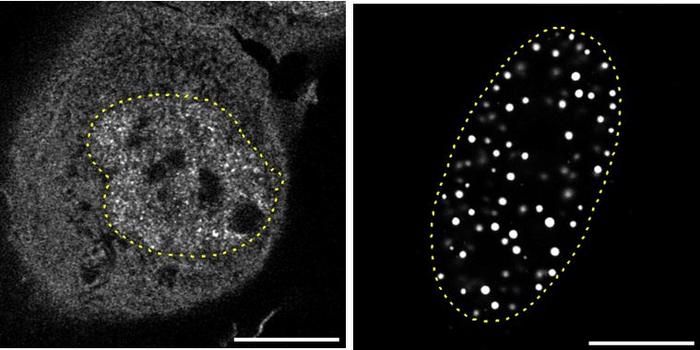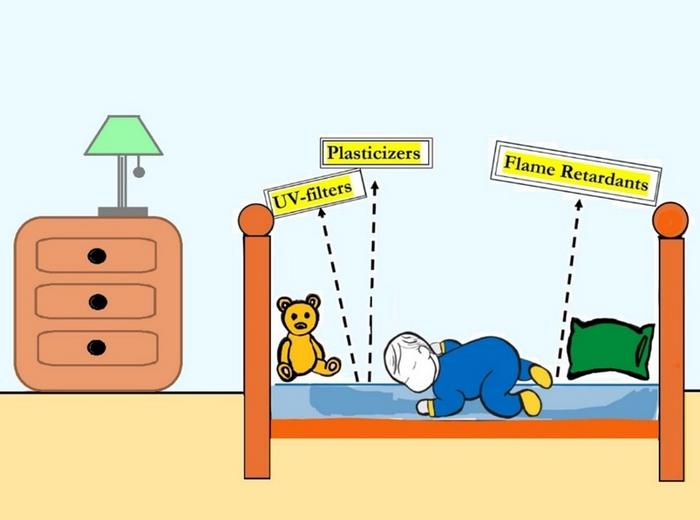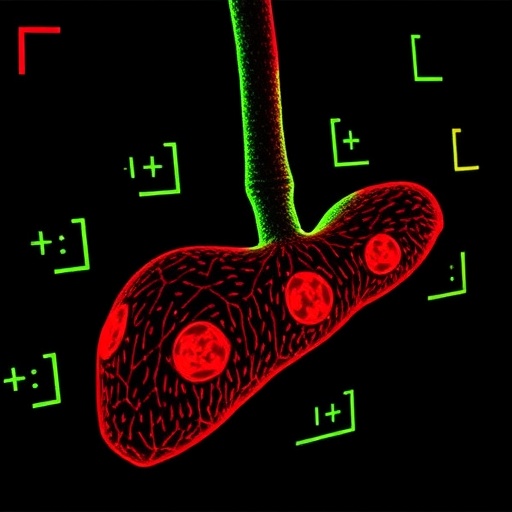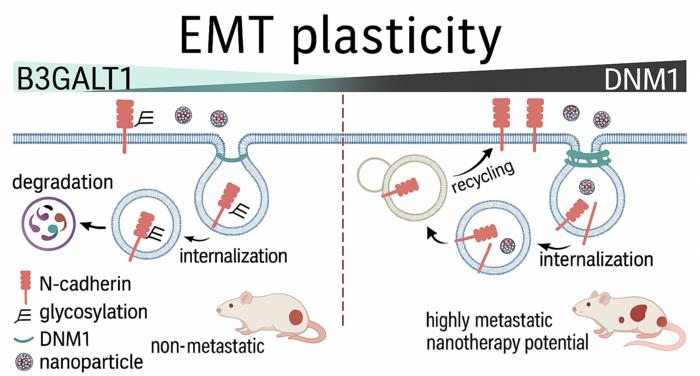Now Reading: m6A Düzenli Ferroptosis Biyomarkerleri Larengeal Kanserin Prediksiyonu
-
01
m6A Düzenli Ferroptosis Biyomarkerleri Larengeal Kanserin Prediksiyonu

m6A Düzenli Ferroptosis Biyomarkerleri Larengeal Kanserin Prediksiyonu
Laryngeal cancer, a significant concern in oncology, poses a serious threat to global health, characterized by substantial morbidity and mortality rates. Recent research has illuminated the intricacies of molecular mechanisms involved, particularly focusing on N6-methyladenosine (m6A) RNA methylation and ferroptosis—two crucial biological processes with potential implications in enhancing diagnosis and treatment. A dedicated team of scientists has embarked on an extensive study to unravel the roles these mechanisms play in laryngeal cancer, providing revolutionary insights that may reshape cancer prognostics.
At the forefront of this research is m6A, the predominant internal modification of eukaryotic messenger RNA. This modification exerts a significant influence on RNA metabolism and gene expression. While previous investigations have highlighted m6A’s epigenetic impacts across various forms of cancer, its specific role in regulating ferroptosis—an iron-dependent form of non-apoptotic cell death—has remained less understood. The exploration of ferroptosis is particularly critical due to its dual role in tumor suppression and resistance to therapy. This novel study pioneers the understanding of the connection between m6A modifications and pathways related to ferroptosis within the context of laryngeal cancer.
Employing advanced bioinformatics techniques, the research team utilized extensive resources from publicly accessible genomic databases, such as The Cancer Genome Atlas Head and Neck Squamous Cell Carcinoma (TCGA-HNSC) and the GSE65858 dataset. These repositories allowed for a comprehensive analysis of genes differentially expressed in relation to m6A regulation and ferroptosis. The application of weighted gene co-expression network analysis unveiled intricate gene connectivity patterns, revealing critical nodes that could serve as therapeutic targets or prognostic biomarkers.
After thorough data extraction, univariate Cox regression analysis combined with least absolute shrinkage and selection operator (LASSO) regression refined the list of candidate genes. This methodical approach distilled the candidates to a select group of biomarkers demonstrating the most significant clinical relevance. As a result, three pivotal genes emerged from this rigorous analytical process: TFRC, RGS4, and FTH1. Validation of these genes in independent cohorts reinforced their potential as clinically relevant prognostic indicators.
Building upon these findings, the researchers constructed a multifaceted risk model that incorporated the three identified biomarkers, creating a robust tool for predicting patient outcomes. Receiver operating characteristic (ROC) curve analysis validated the model’s effectiveness and reliability, showcasing its capability in stratifying patients according to their risk profiles. This predictive power is essential in laryngeal cancer, where timely intervention can dramatically enhance survival rates and patient quality of life.
Moreover, the research team ventured further, scrutinizing the immunological landscape associated with varying risk scores. Utilizing the Tumor Immune Dysfunction and Exclusion (TIDE) algorithm, coupled with the Estimation of STromal and Immune cells in MAlignant Tumors using Expression data (ESTIMATE) scoring, they discovered compelling correlations. These findings suggest that the regulation of ferroptosis-related genes influenced by m6A modifications might significantly shape the tumor microenvironment, potentially affecting mechanisms of immune evasion and therapeutic resistance in laryngeal cancer.
One of the most thrilling aspects of this study is its implications concerning drug sensitivity. The investigation revealed nineteen chemotherapeutic agents whose effectiveness appeared to correlate with the defined risk scores from the biomarker model. This novel intersection of molecular profiling with pharmacological responses opens doors for personalized medicine in laryngeal cancer, allowing treatments to be tailored based on the specific molecular characteristics of each tumor.
To augment their computational insights, the researchers conducted experimental validations through quantitative real-time PCR and western blot analyses. They confirmed the elevated expression of TFRC, RGS4, and FTH1 in both laryngeal carcinoma tissues and established cell lines, bridging the gap between theoretical predictions and biological realities. Notably, TFRC and FTH1 levels exhibited a significant correlation with patient survival, positioning them as promising candidates for clinical monitoring.
TFRC, functioning as the transferrin receptor, is critical in iron metabolism—an essential element of the ferroptosis pathway. FTH1 encodes the heavy chain of ferritin, crucial for iron storage in cells. The heightened expression of these genes indicates a potential dysregulation of iron homeostasis that may aid tumor progression. Conversely, RGS4, traditionally associated with G-protein signaling pathways, suggests novel pathways through which m6A may influence signal transduction and ferroptosis outcomes.
This study’s confluence of epigenetics, cellular death pathways, and immune modulation captures the multifaceted nature of cancer biology. By synthesizing high-throughput data analysis with traditional molecular biology methodologies, the researchers provide a comprehensive framework for understanding the underlying molecular mechanisms of laryngeal cancer. These insights not only suggest novel diagnostic markers but also highlight actionable targets for innovative therapeutic strategies aimed at controlling ferroptosis and overcoming drug resistance.
Furthermore, the connection between risk scores and metrics of immune dysfunction, derived from TIDE and ESTIMATE algorithms, ignites vital discussions about the interplay between ferroptosis and the immune microenvironment. Delving deeper into how ferroptotic pathways influence immune cell behavior could unveil mechanisms enabling tumors to evade immune recognition, thus guiding the development of combination therapies that integrate immunotherapy with strategies aimed at modulating ferroptosis.
In summation, this groundbreaking study identifies TFRC, RGS4, and FTH1 as critical biomarkers regulated by m6A, with significant prognostic implications in laryngeal cancer. Their validation presents a novel molecular signature that could transform patient stratification and treatment protocols. This research marks a significant advancement in our understanding of cell death mechanisms within malignancies and points toward more effective, personalized therapeutic interventions.
As the field of oncology continues to progress, investigations like this showcase the transformative potential of studying epigenetic modifications and ferroptotic mechanisms in the fight against aggressive cancers such as laryngeal carcinoma. By shedding light on the molecular interactions that drive cancer progression, these findings initiate a new era of biomarker-driven precision medicine, offering hope for improved outcomes among patients grappling with this challenging disease.
Araştırma Konusu: Identification of m6A-regulated ferroptosis biomarkers for prognosis in laryngeal cancer
Makale Başlığı: Identification of m6A-regulated ferroptosis biomarkers for prognosis in laryngeal cancer
Haberin Yayın Tarihi: 2025
Web References: https://doi.org/10.1186/s12885-025-14134-8
Doi Referans: https://doi.org/10.1186/s12885-025-14134-8
Resim Credits: Scienmag.com
Anahtar Kelimeler: advanced bioinformatics in cancer research, cancer morbidity and mortality, epigenetic regulation in oncology, ferroptosis biomarkers in laryngeal cancer, genomic databases for cancer studies, head and neck squamous cell carcinoma research, iron-dependent cell death in tumors, laryngeal cancer prognosis, m6A RNA methylation in cancer, molecular mechanisms in cancer biology, non-apoptotic cell death mechanisms, therapeutic strategies for laryngeal cancer.

























